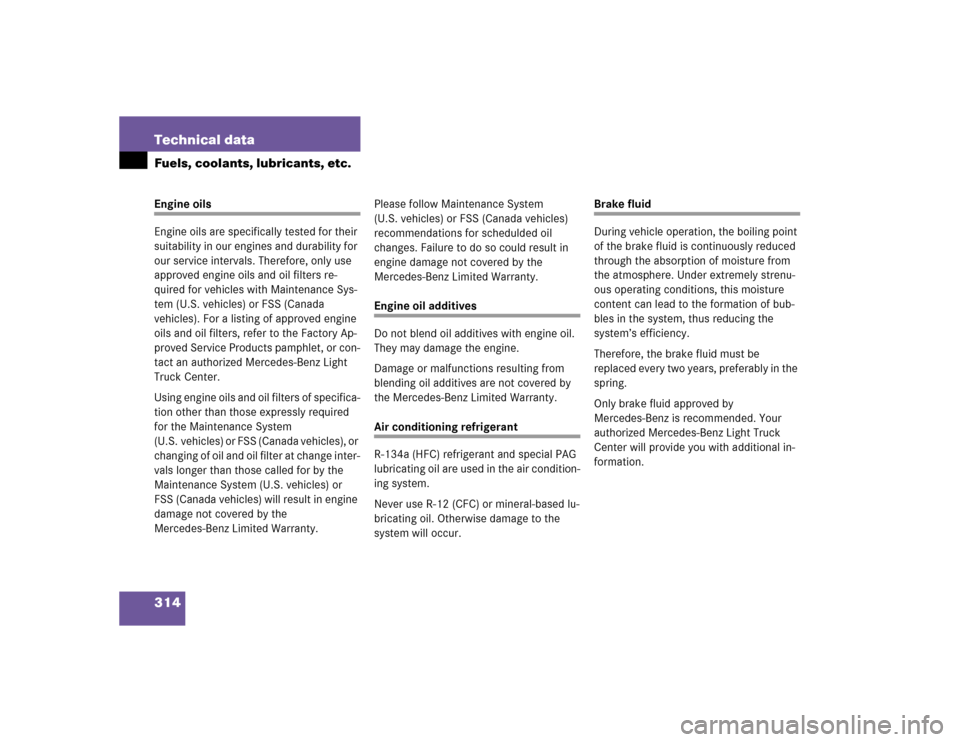Page 140 of 356

138 Controls in detailAutomatic climate controlThe automatic climate control is operation-
al whenever the engine is running. You can
operate the climate control system in ei-
ther the automatic or manual mode. The
system cools or heats the interior depend-
ing on the selected interior temperature
and the current outside temperature.
Nearly all dust particles, pollutants and
odors are filtered out before outside air en-
ters the passenger compartment through
the air distribution system.Warning!
G
When operating the automatic climate con-
trol, the air that enters the passenger com-
partment through the air vents in the
footwell can be very hot or very cold (de-
pending on the set temperature). This may
cause burns or frostbite on unprotected skin
in the immediate area of the air vents.
Always keep sufficient distance between un-
protected parts of the body and the footwell
air vents. If necessary, change the air flow
using the air distribution controls to direct
the air away from the footwell air vents
(�page 140).
Warning!
G
Follow the recommended settings for heat-
ing and cooling given on the following pag-
es. Otherwise the windows could fog up,
impairing visibility and endangering you and
others.
iSevere conditions (e.g. strong air pollu-
tion) may require replacement of the fil-
ter before its scheduled interval. A
clogged filter will reduce the air volume
to the interior.
If the vehicle interior is hot, ventilate
the interior before driving off.
Keep the air intake grille in front of the
windshield free of snow and debris.
Do not touch the interior temperature
sensor to maintain a precise tempera-
ture.
The set value is indicated by a lighted
segment on the control wheels.
Page 228 of 356

226 OperationEngine compartment�
If necessary, add engine oil.
For adding engine oil see (
�page 226).
For more information on engine oil, see
“Technical data” section (
�page 312) and
(
�page 314).
See the “Practical hints” section
(�page 260) if the low engine oil level
warning lamp in the instrument cluster
flashes.Adding engine oil
Only use approved engine oils and oil fil-
ters required for vehicles with Mainte-
nance System (U.S. vehicles) or FSS
(Canada vehicles). For a listing of approved
engine oils and oil filters, refer to the Fac-
tory Approved Service Products pamphlet
in your vehicle literature portfolio, or con-
tact an authorized Mercedes-Benz Light
Truck Center.
Using engine oils and oil filters of specifica-
tion other than those expressly required
for the Maintenance System
(U.S. vehicles) or FSS (Canada vehicles), or
changing of oil and oil filter at change inter-
vals longer than those called for by the
Maintenance System (U.S. vehicles) or
FSS (Canada Vehicles) will result in engine
damage not covered by the
Mercedes-Benz Limited Warranty.1Oil dipstick
2Filler cap
�
Unscrew filler cap2 from filler neck.
�
Add engine oil as required. Be careful
not to overfill with oil.
Be careful not to spill any oil when adding.
Avoid environmental damage caused by oil
entering the ground or water.
iThe filling quantity between the upper
and lower marks on the oil dipstick is
approximately 2.1 US qt. (2.0 l).
Page 314 of 356
312 Technical dataFuels, coolants, lubricants, etc.Capacities
Vehicle components and their respective
lubricants must match.Therefore only use products tested and
approved by Mercedes-Benz.Please refer to the Factory Approved
Service Products pamphlet, or inquire at
your Mercedes-Benz Light Truck Center.
Model
Capacity
Fuels, coolants, lubricants, etc.
Engine with oil filter
ML 350, ML 500
8.5 US qt (8.0 l)
Approved engine oils
Automatic transmis-
sion
9.0 US qt (8.5 l)
MB Automatic Transmission Oil
Transfer case
1.6 US qt (1.5 l)
(Dexron 3 or Dexron 2E)
Rear axle
1.3 US qt (1.25 l)
(Hypoid gear oil SAE 90, 85 W 90)
Front axle
1.2 US qt (1.1 l)
(Hypoid gear oil SAE 90)
Power steering
approx. 0.65 US qt (0.6 l)
MB Power Steering Fluid
Front wheel hubs
approx. 1.5oz (43g) each
High temperature roller bearing grease
Page 316 of 356

314 Technical dataFuels, coolants, lubricants, etc.Engine oils
Engine oils are specifically tested for their
suitability in our engines and durability for
our service intervals. Therefore, only use
approved engine oils and oil filters re-
quired for vehicles with Maintenance Sys-
tem (U.S. vehicles) or FSS (Canada
vehicles). For a listing of approved engine
oils and oil filters, refer to the Factory Ap-
proved Service Products pamphlet, or con-
tact an authorized Mercedes-Benz Light
Truck Center.
Using engine oils and oil filters of specifica-
tion other than those expressly required
for the Maintenance System
(U.S. vehicles) or FSS (Canada vehicles), or
changing of oil and oil filter at change inter-
vals longer than those called for by the
Maintenance System (U.S. vehicles) or
FSS (Canada vehicles) will result in engine
damage not covered by the
Mercedes-Benz Limited Warranty.Please follow Maintenance System
(U.S. vehicles) or FSS (Canada vehicles)
recommendations for schedulded oil
changes. Failure to do so could result in
engine damage not covered by the
Mercedes-Benz Limited Warranty.
Engine oil additives
Do not blend oil additives with engine oil.
They may damage the engine.
Damage or malfunctions resulting from
blending oil additives are not covered by
the Mercedes-Benz Limited Warranty.Air conditioning refrigerant
R-134a (HFC) refrigerant and special PAG
lubricating oil are used in the air condition-
ing system.
Never use R-12 (CFC) or mineral-based lu-
bricating oil. Otherwise damage to the
system will occur.
Brake fluid
During vehicle operation, the boiling point
of the brake fluid is continuously reduced
through the absorption of moisture from
the atmosphere. Under extremely strenu-
ous operating conditions, this moisture
content can lead to the formation of bub-
bles in the system, thus reducing the
system’s efficiency.
Therefore, the brake fluid must be
replaced every two years, preferably in the
spring.
Only brake fluid approved by
Mercedes-Benz is recommended. Your
authorized Mercedes-Benz Light Truck
Center will provide you with additional in-
formation.